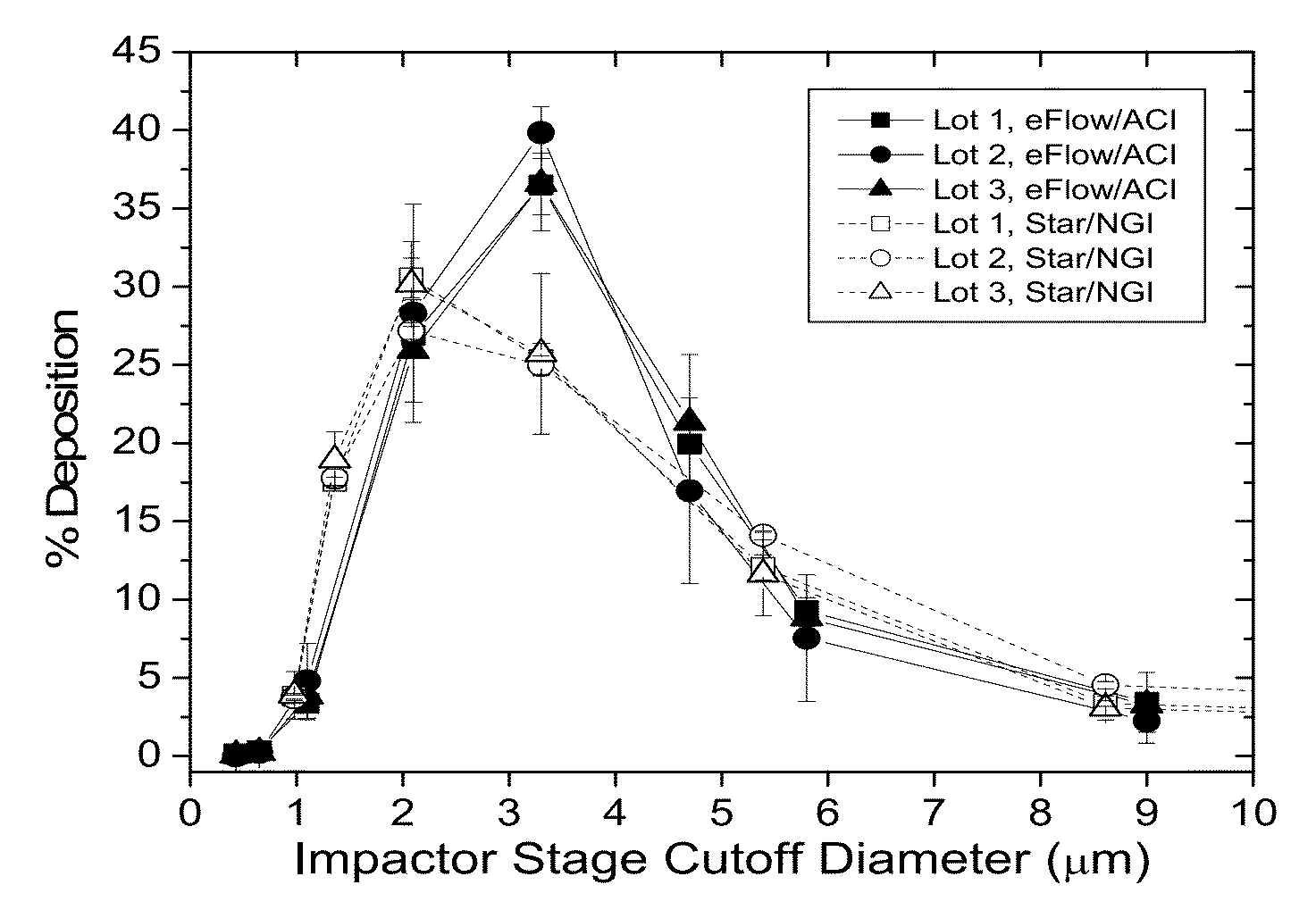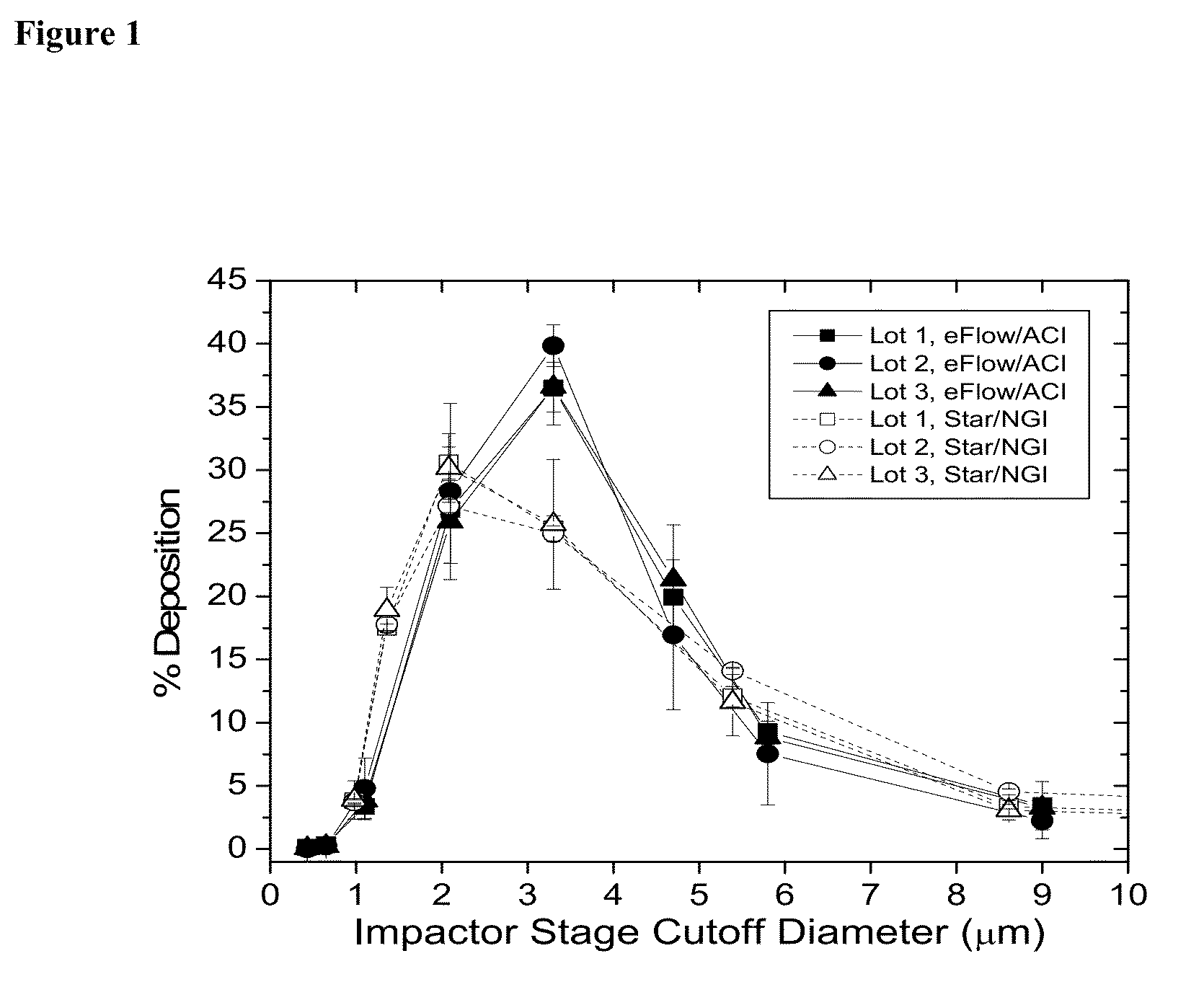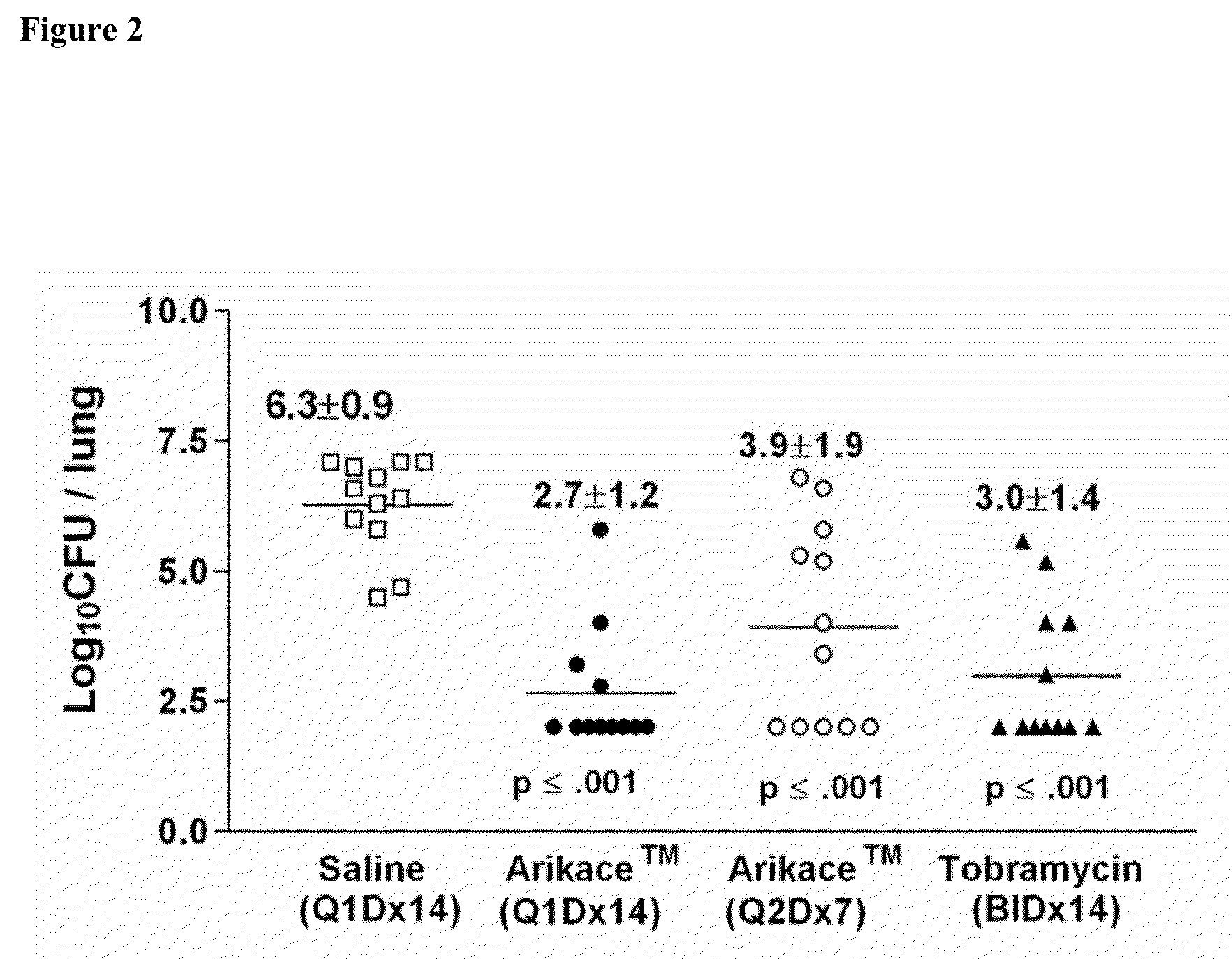Methods of treating pulmonary disorders with liposomal amikacin formulations
a technology of liposomal amikacin and pulmonary disorders, which is applied in the direction of drug compositions, dispersed delivery, antibacterial agents, etc., can solve the problems of clogging the opening of the pancreas and the lungs, chronic respiratory and digestive problems, and mucus beginning to build up and star
- Summary
- Abstract
- Description
- Claims
- Application Information
AI Technical Summary
Problems solved by technology
Method used
Image
Examples
example 1
Phase 1b / 2a Study
[0125]Data used for this population PK analysis were obtained from two human clinical Phase 1b / 2a studies in which CF patients, chronically infected with P. aeruginosa, were administered a total of 500 mg of Liposomal Amikacin daily (in two 20 minute sessions with a 5 minute rest period in between) for 14 days.
[0126]Amikacin serum samples were obtained pre-dose, and 1, 2, 4, 6, 8, 12 and 24 hours post-dose on Days 1 and 14, while urine samples were collected over 6 hour intervals on Day 1 and Day 14 for a period of 24 hours. Sputum samples were also collected on Day 1 and Day 14, soon after the dose was administered, between 4 and 6 hours after dosing and prior to dose administration on the following day, as well as on Days 14, 21, and 28. Serum, sputum and urine samples were assayed for amikacin using Liquid Chromatography-Mass Spectrometry / Mass Spectrometry (LC-MS / MS).
[0127]Pulmonary function tests (PFT) were carried out during screening from Day −14 to 0) and at ...
example 2
Phase 1 Clinical Study
[0158]Two Phase 1 single dose clinical studies were completed with 20 and 50 mg / mL formulations of Liposomal Amikacin in healthy volunteers and in CF patients, respectively. Six healthy volunteers received a single dose of 120 mg of Liposomal Amikacin and tolerated it well, and exhibited prolonged retention of the radiolabeled liposomes in the lungs, with a measured half-life of 46 hours.
[0159]Liposomal Amikacin was administered to CF subjects with chronic P. aeruginosa infections in a human clinical Phase I study (Study 3). Single doses of 90 mg (n=6), 270 mg (n=6), or 500 mg (n=4) were administered to CF subjects to evaluate the safety, tolerability and pharmacokinetics of liposomal amikacin for inhalation. A total of 24 patient dosing sessions of a single dose administration of Liposomal Amikacin or placebo by inhalation via the Pari LC Star nebulizer were evaluated. Two serious adverse events were reported (both occurring in placebo group). Both events reco...
example 4
Nebulization of Liposomal Amikacin
[0174]The aerosol properties of Liposomal Amikacin produced from the eFlow 40L are shown in Table 15. When compared to nebulizate generated from the LC Star, the mass median aerodynamic diameter (MMAD) values for the eFlow are ˜0.5 μm larger. The actual size dependent mass distributions from both ACI (with eFlow) and NGI (with LC Star) cascade impactors for nebulized Liposomal Amikacin are shown in FIG. 1. Aerosol from the eFlow / ACI measurements was slightly narrower in size distribution than that from the LC Star / NGI. This difference is reflected in the lower mean geometric standard deviation (GSD) (1.66 versus 1.99) which is a measure of the width of the distribution around the MMAD, see values in Table 14. This narrower distribution offsets any potential effect of a larger MMAD and therefore, the amount of nebulized drug in the respirable range (<5 μm droplet size) is comparable for both eFlow and LC Star.
[0175]
TABLE 14Properties of Liposomal Ami...
PUM
| Property | Measurement | Unit |
|---|---|---|
| Forced Expiratory Volume | aaaaa | aaaaa |
| time | aaaaa | aaaaa |
| length of time | aaaaa | aaaaa |
Abstract
Description
Claims
Application Information
 Login to View More
Login to View More - R&D
- Intellectual Property
- Life Sciences
- Materials
- Tech Scout
- Unparalleled Data Quality
- Higher Quality Content
- 60% Fewer Hallucinations
Browse by: Latest US Patents, China's latest patents, Technical Efficacy Thesaurus, Application Domain, Technology Topic, Popular Technical Reports.
© 2025 PatSnap. All rights reserved.Legal|Privacy policy|Modern Slavery Act Transparency Statement|Sitemap|About US| Contact US: help@patsnap.com



